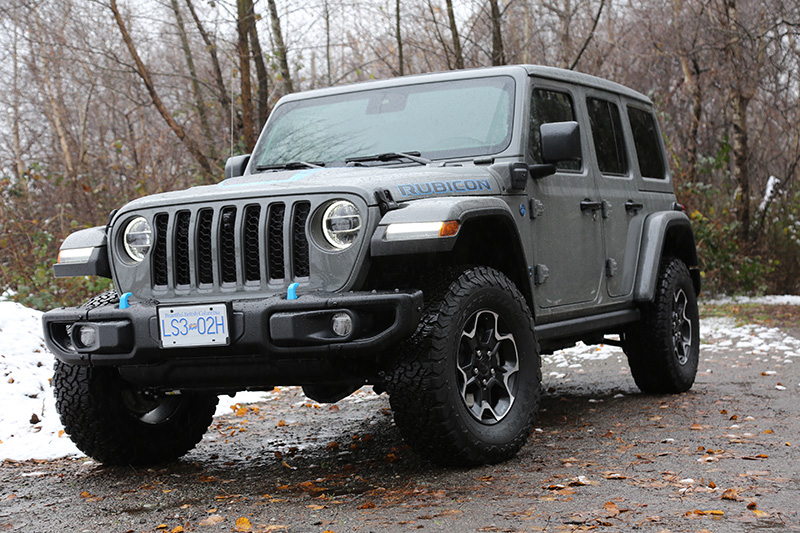
The push for electrification of vehicles marches on, with most models now available at least as a hybrid, if not as a full electric. There are even some that you might not expect, like EV pickups, and on that list, one might also add the Jeep Wrangler Rubicon, the off-roader by which all others are measured. It is now available as a plug-in hybrid, and Jeep calls it the 4xe (four by E).
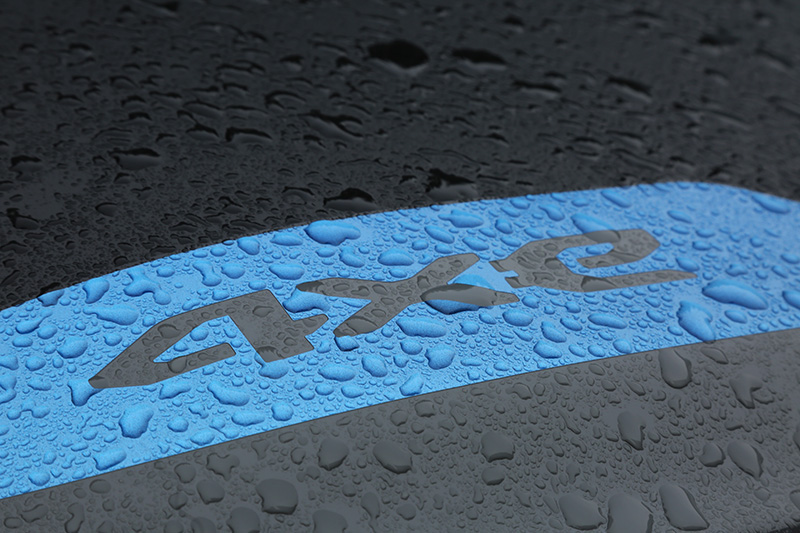
A bit of a pre-amble here. One has to assume that a good number of people who buy a Rubicon over one of the more “normal” Wranglers is at least somewhat interested in taking it far off-road. Yes, we know there are those who just must have the biggest, baddest version of a given vehicle, no matter where it gets driven. The point here is that this is a fully-equipped Rubicon, with bigger axles, locking differentials, disconnecting sway bars, the lot.
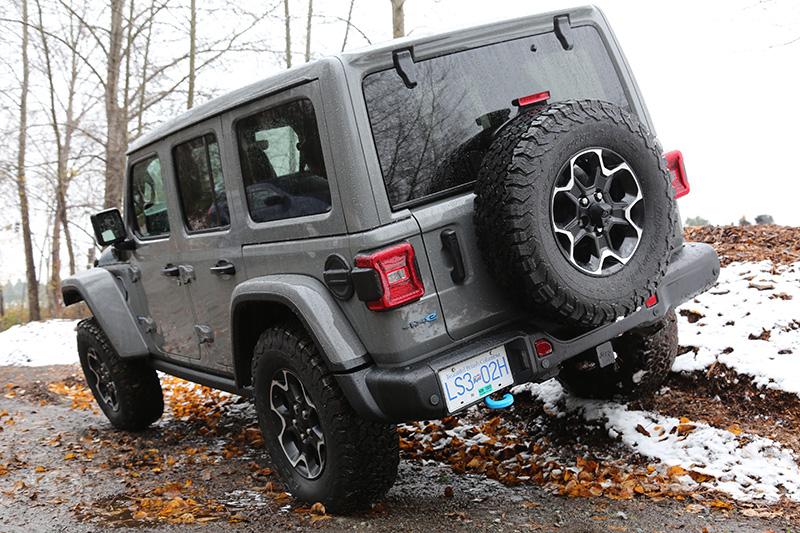
But we are not going to discuss any of that, because its capabilities are well-known, and because we didn’t get to drive it any further off road than the piles of dirt we found on which to photograph it. What we did experience, and what we have to think will be a big attraction to potential buyers, is the plug-in hybrid drivetrain that makes this a “have your cake and eat it too” kind of situation for the owner. It’s what the driver will experience by far the majority of time.
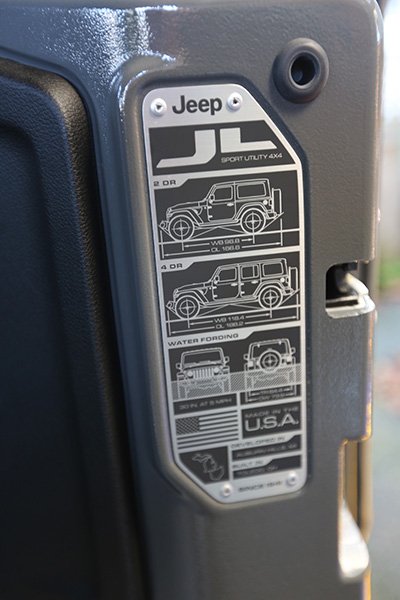
The 4xe, being a PHEV, does have an engine, in this case the 2.0-litre turbo four sourced from Fiat. It makes some 270 horsepower, but does it in a rather coarse way that might actually complement the personality of a Wrangler, but can be a bit obtrusive too. The drivetrain is a normal Jeep set-up, with a low-range transfer case and driveshaft to the rear end. The designers knew they shouldn’t mess with that technology by making the rear wheels turn by only an electric motor, so they incorporated the two motors that apply power both front and rearward into the 8-speed automatic transmission itself, the rear one actually replacing the torque converter. So the 4xe can go rock climbing in electric mode, or so one would think.
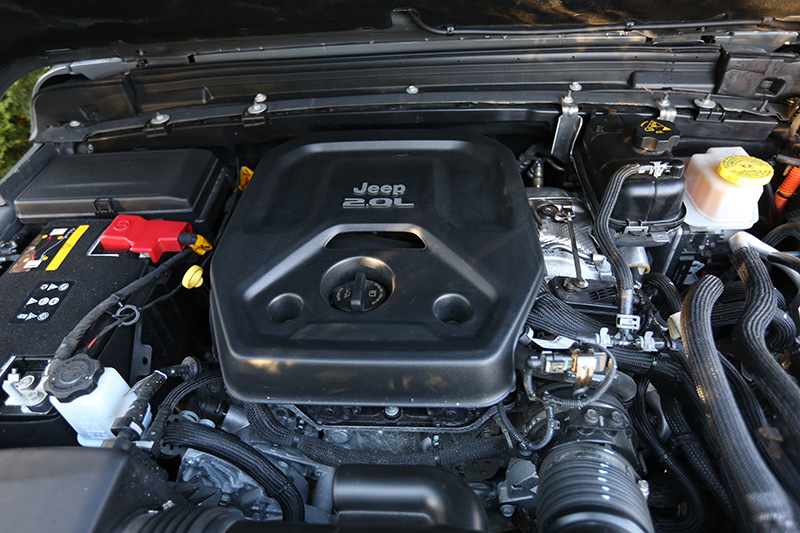
Under the back seat, in a shock-resistant and waterproof housing, resides the 14-kWh battery pack, which, when fully charged, is said to deliver some 40 kilometres of EV driving range. At least that is what the dashboard readout said on my tester. Like most such PHEV vehicles, you can choose between hybrid, electric and E-save (don’t use any electricity.) In electric mode, and in normal urban driving, the charge consistently ran out at about 25 km. The numbers on the dashboard are never exact, but that’s quite the difference.
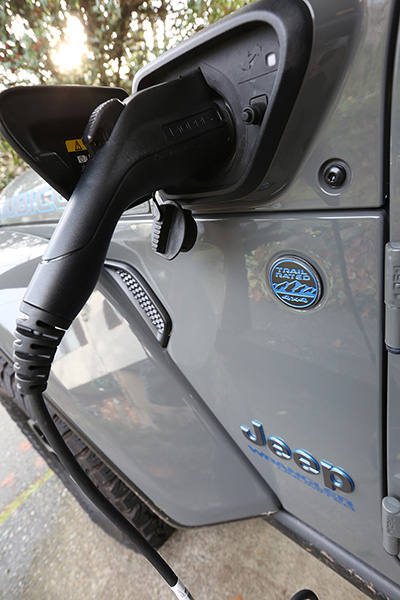
Also, in hybrid mode with a charged battery, you’d expect a mix of gas and electric propulsion, but our 4xe seemed to still run on electric only, unless you floored the throttle, whereupon the gas engine noisily turned itself on, and stayed on until the vehicle came to a complete stop. Don’t know if this is normal behaviour for 4xe’s, or just our unit, but it was a bit disconcerting.
In any case, the 4xe is pretty quick for a very large 5,300-pound vehicle, making the run to 96 km/h in about 6 seconds. One must also note that the ride and handling were better than what might have been expected from the large off-road tires (BFG All Terrain TA K02 Baja LT285/70-17) and two live axles, with what feels like a lot of rubber bushings in the suspension. The steering and brakes are somewhat uncommunicative, but not to a surprising extent.
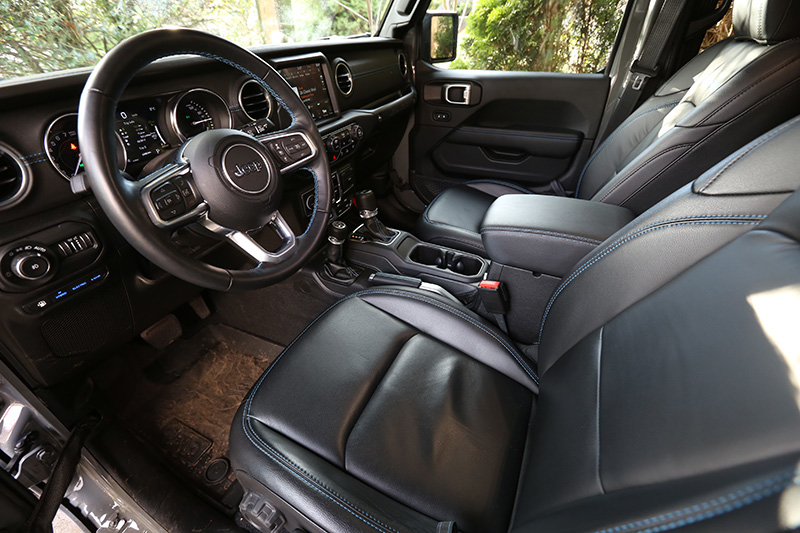
Our very well equipped tester had lots of bells and whistles inside, including the top-notch Uconnect screen, a full-length power-folding cloth roof, and power seats. Those front seats have the same shortcomings that Wrangler seats have had for decades, some due to the basic architecture of the vehicle, which we accept will not change. For those longer of leg and arm, like this writer, the driver’s seat does not go back far enough, and the bottom cushion is too short and low, even with power adjust. As on the outside of the 4xe, the minor trim is a bright blue that goes well with the medium grey colour of our unit.
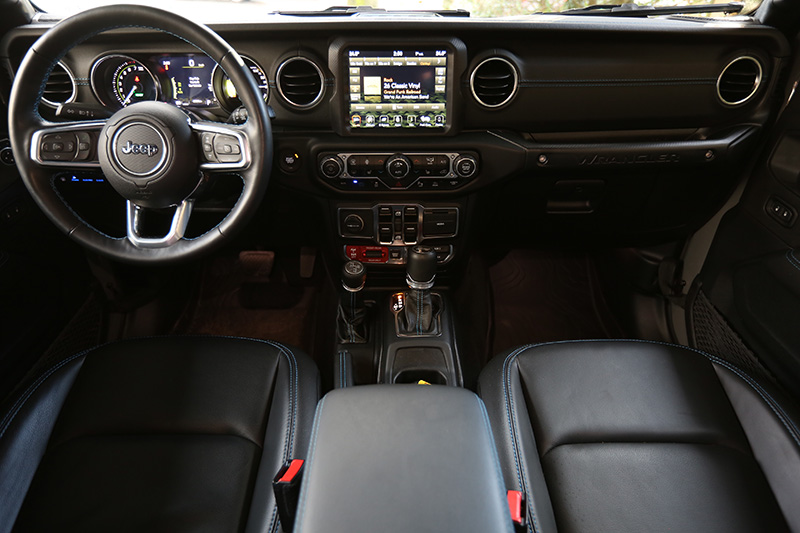
Being an Unlimited model, there is a back seat that folds down via the cushions folding forward, and the seatbacks folding down flat against them. That makes for a very commodious rear cargo compartment with all sorts of tie down points, etc, all accessed by a two-way tailgate that sees the top half glass swing up, and the bottom half with the spare tire swing out, with hinges on the right side, probably not ideal for loading while parked at a curb.
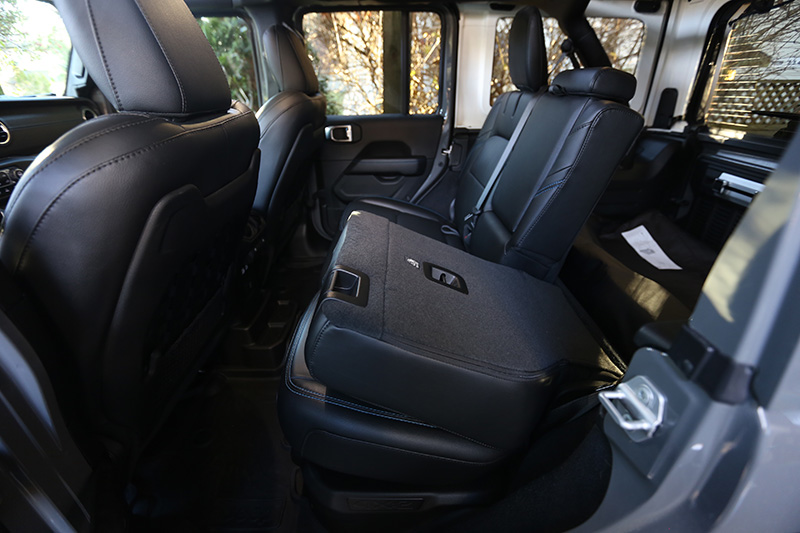
So, the 4xe is all Wrangler and really only breaks new ground in the use of batteries and motors. Of course, that is a very important new level of technology on such a traditional and, in some ways, old-tech vehicle. That, in turn, leads to a lot of the sort of contemplation of factors one might have for any electrified vehicle – not the least of which is cost. The 4xe Unlimited Rubicon has a base price of $59,995, some $10,000 more than the base 4xe Sahara, which may be plenty of Jeep for most folks. The regular Unlimited Rubicon costs $53,515, so the 4xe is a $6,480 hit over that. And there are many, many options available that can add $10 or 20K to the price of any of them.
One must also ask to what extent that 25 or 40 km of electric range will be worth the extra coin. Driving around the city, it would be worthwhile if only because that 4-cylinder on its own would have to move a lot of weight, with the expected effect on fuel consumption. If you are actually getting a Rubicon to be driving it off-road a lot, the electric capability may not be much more than a “look at my totally quiet Jeep climbing over that rock,” although it does add a lot of torque as long as the electrons last. It might be more useful to save the electricity for the ride home from the trail head, which leaves you the gas engine to do the hard work. Food for thought.
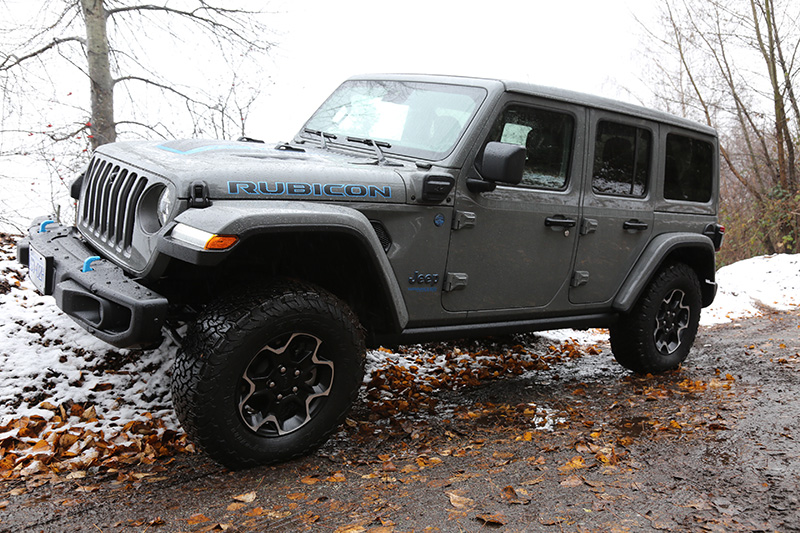
In any case, the Wrangler 4xe is a look into the not-so-far-off future of both the Jeep line-up, and off-roading in general. To get the full benefits of its electric capability, and not just have the most expensive Wrangler, or a conversation piece, you just have to remember to plug it in.




